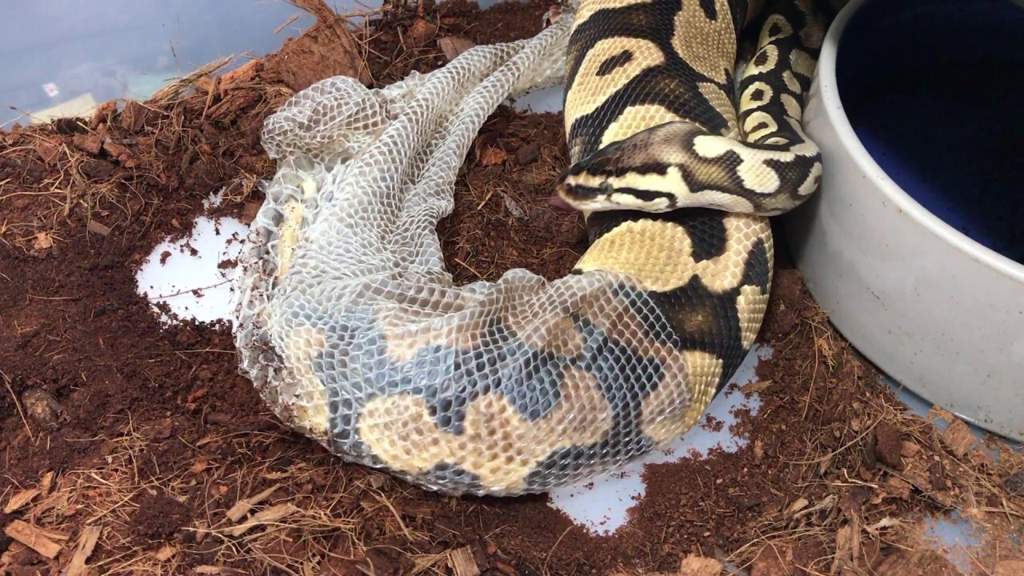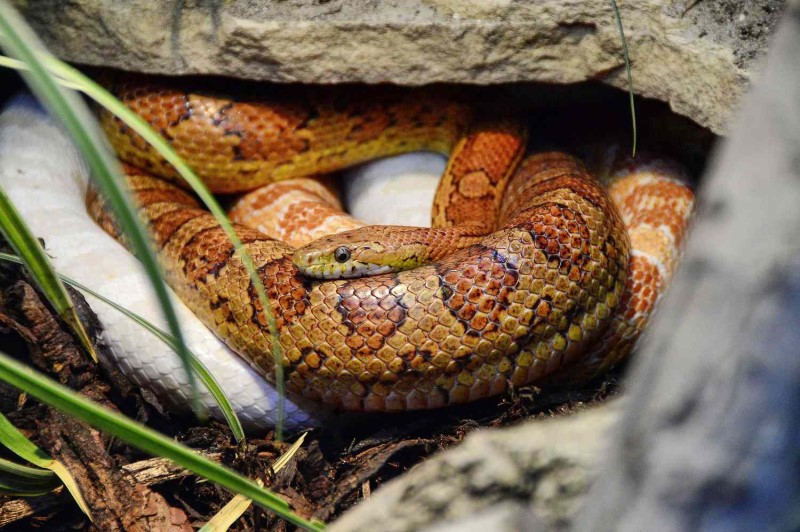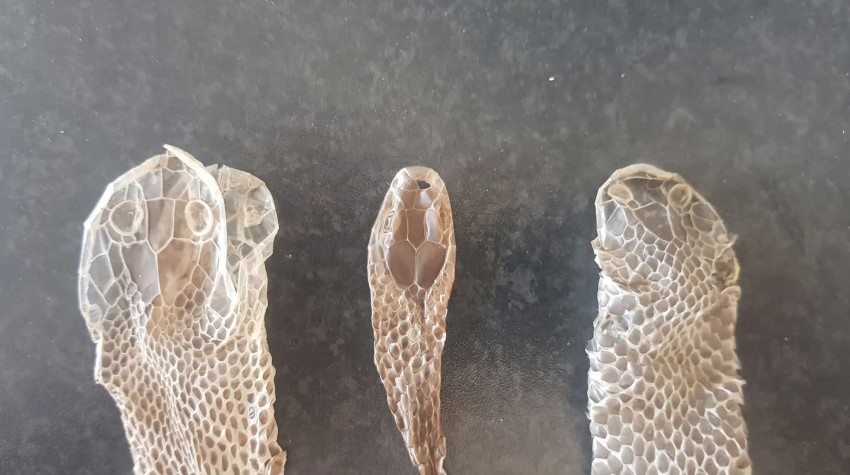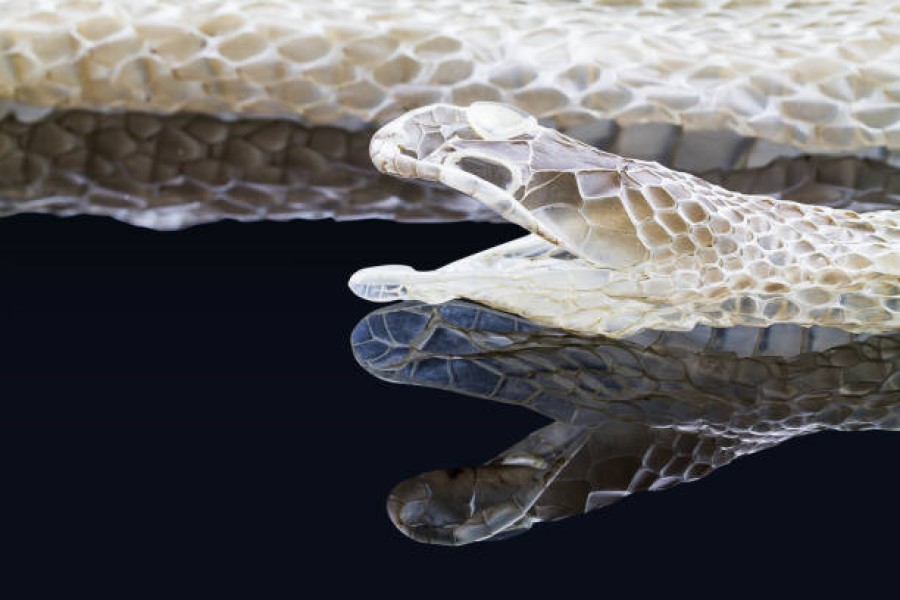A snake’s existence includes regular and necessary phenomena known as molting. Throughout its entire life, it is compelled to shed its skin. Even though this is a totally natural occurrence, shedding snakes require special care. How to keep the snake molt? Go to yeusnaker‘s article and you will know more stuff. Start from the snake’s molting phenomenon right below!
The Molting Phenomenon of Snakes
In general, all snakes molt at some point in their lives. What kind of snake it is doesn’t matter. Since they are animals that develop quickly, molting is unavoidable. Young snakes molt once every month, but as they become older, both male and female snakes only molt 3 or 4 times a year.
As you likely already know, a snake’s initial refusal to feed is an indication that it is preparing to molt. As a result of the molt, which covered the snake’s entire body from head to tail, its color gradually turned more and more white, and its eyes started to see less well than previously. It typically searches for secure hiding spots at this time.
It will emerge and discover a way to exit the old coat when the moment is appropriate. It tries to rip off a piece of its snout so it can roll its molt from head to tail by seeking for rough surfaces like pebbles or branches to rub on. If you want to learn more about this process, you can refer to Manifestations of Snakes when Shedding Skin.
How to Keep the Snake Molt?
By increasing the cage’s humidity and water content, make sure to establish a comfortable habitat for snakes. To assist it in shedding its skin, give the snake a basin of water and some raw materials. Keep the cage out of direct sunlight and in a dry area to maintain its condition. If the cage is left in a humid area, it may soften and become unusable for storage, which will cause it to spoil soon.
You can do the following steps to keep the snake molt:

Things to do before the snake molts
Realize your snake is about to molt:
Prior to the molting process even starting, you need begin preparing for it. You’ll need to keep an eye on your snake and look for signals that it is about to shed in order to accomplish this. Watch your snake’s eyes; right before it begins to molt, they will seem dull and bluish-white. The snake’s current skin will start to look dull right before it comes off, so keep an eye out for that as well. Start getting ready the moment you see the warning signals.
Make a humidity cage or box:
Snakes require a lot of moisture for healthy shedding. Using a feather container is one approach to raise the humidity in your snake’s habitat. Make sure it is well aired by poking holes through a box, such as a shoebox. Give the snake a damp location to molt by placing a wet paper towel inside the container. To enhance humidity in the cage, you might also try softly spraying it. Fill a spray bottle with warm water before using it.
Management of cage humidity:
Watch the humidity levels in the area where your snake lives. A moisture meter for snake cages is available from pet shops or big-box retailers. Snakes need a cage
with a humidity level of 50–70% while they are molting. There are actions you may do to raise the humidity if it is below this level in your snake’s cage. Snap the cage cover shut. You can safely cover the top part of the cage if there is a curtain hanging over it to improve humidity.

Things to do while the snake molts
Fill the snake’s cage with a warm water basin:
You will see skin patches start to fall off as your snake starts to molt. By putting a bowl of warm water inside the snake’s cage, you can aid in its molting process. Your snake will be able to take baths in the water, which will facilitate skin shedding. Add just enough water to completely soak the snake, but not so much that it will be submerged in the water once it is in the pot.
Adding raw materials to the solid cage:
In order to aid in the process of molting, snakes can also rub their skin by crawling over rough objects like twigs and rocks. If your snake rubs its nose against the bars of the cage, it is molting and attempting to lose its skin. It’s crucial to replenish the snake’s cage with raw materials if you notice your snake acting in this way. You can utilize pine cones, bark fragments, and other natural resources that you find outside.
In the event of incomplete hair loss, consult a veterinarian:
Even if you try your hardest, your snake might not entirely molt. Consult your veterinarian if your snake doesn’t completely shed its fur within one to two weeks. To check your snake and help remove any residual skin, consult your veterinarian. Most hair loss issues are brought on by a lack of moisture, but you should visit a doctor to rule out any underlying medical conditions. Never try to remove extra skin by yourself, especially not near the snake’s mouth or eyes.

Bottom line
You should be aware that shedding occurs naturally and is necessary for the snake to develop. This occurs frequently because your snake requires additional layers of clothes to properly accommodate its size. You should be aware that while letting your snake alone can help it molt, pestering it will stop it in its tracks. Because a lubricating layer of moisture develops between the old and new skin, snakes can shed without experiencing any pain. However, snakes tend to hide when they shed because they feel exposed. How to keep the snake molt is all we have provided above, you can apply to your snake.
You may also like: Can Pet Snakes be Affectionate? – Important Things about Your Pet

